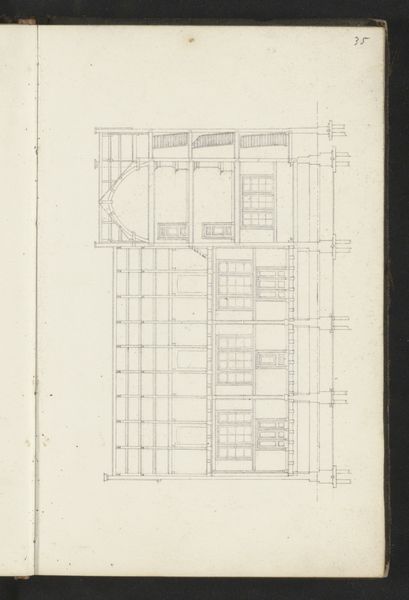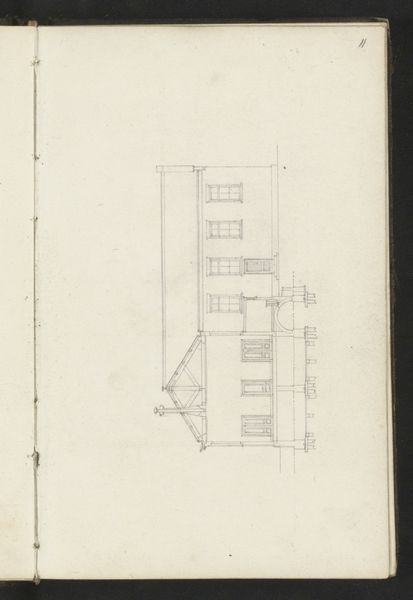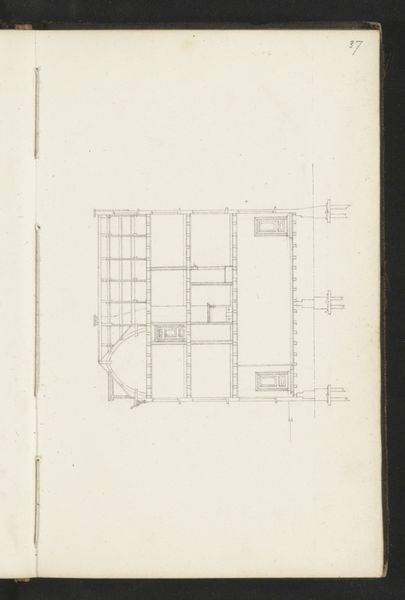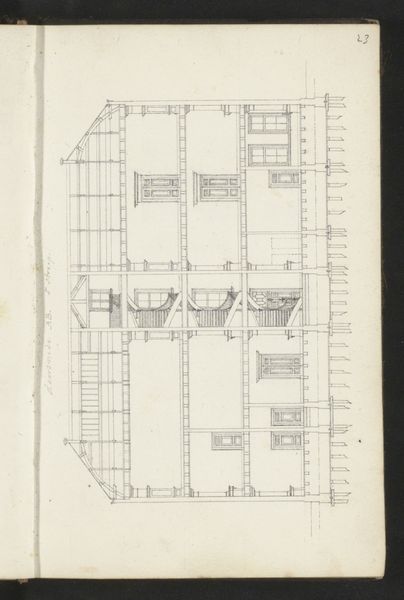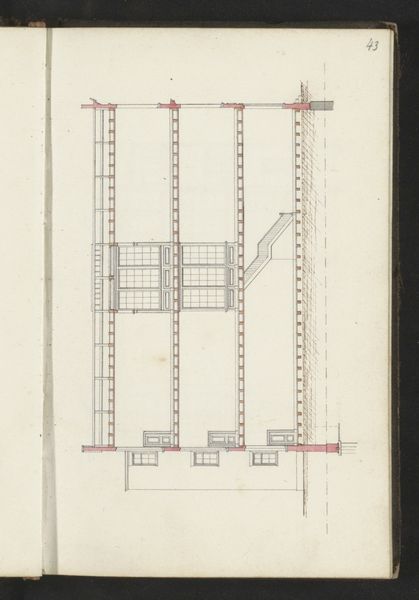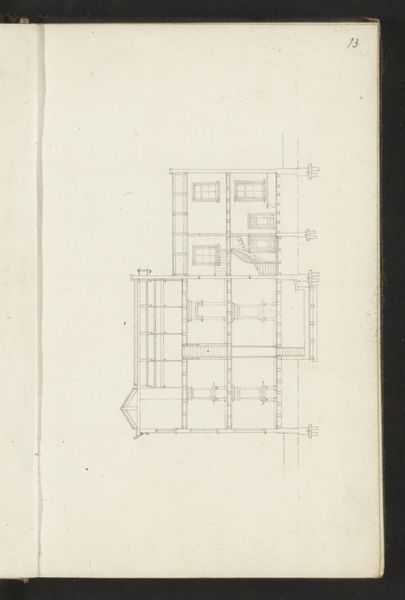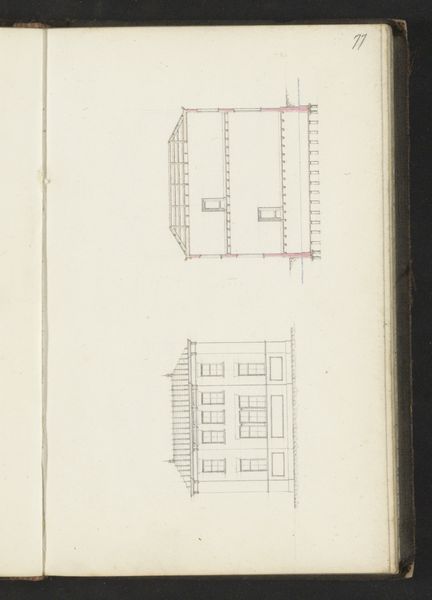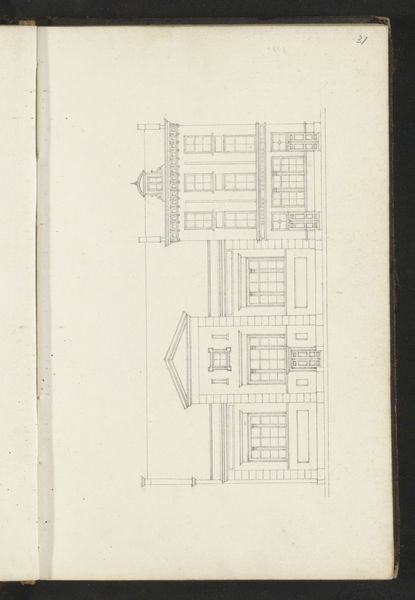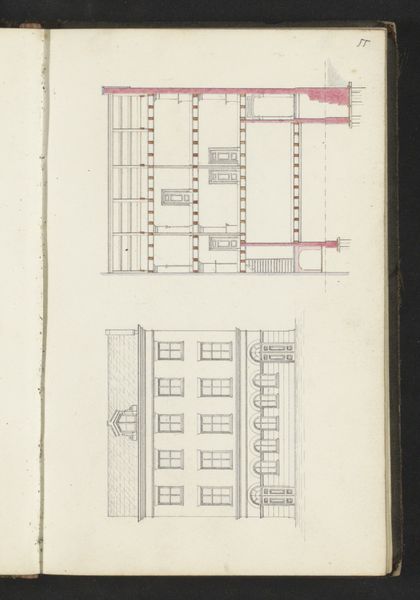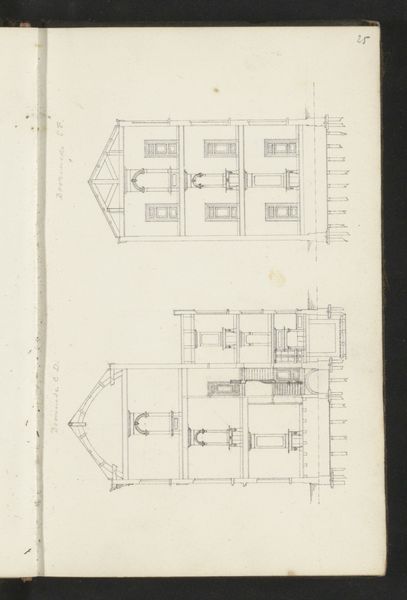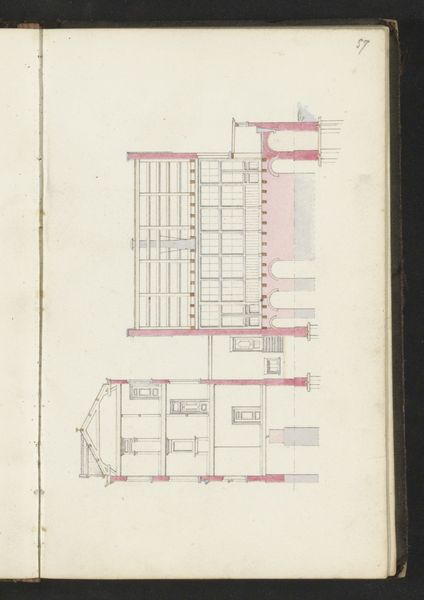
drawing, paper, pencil, architecture
#
drawing
#
paper
#
pencil
#
cityscape
#
architecture
#
building
Copyright: Rijks Museum: Open Domain
Curator: This drawing by Willem Springer Jr., titled "Opstand van de façaden van twee stadspanden," offers a fascinating glimpse into mid-19th century Amsterdam. The drawing, created circa 1864, uses pencil on paper to depict the facades of two adjacent city buildings. Editor: Immediately, I’m struck by the diagrammatic quality. The crisp lines and clear delineation remind me of architectural blueprints; it’s as though we are witnessing a critical stage of design. Curator: That’s insightful. Drawings like this provided crucial information for architects and builders. Springer, the son of a well-known cityscape painter, understood the growing public interest in urban planning and preservation. Think of it as a form of visual inventory in a rapidly changing city. Editor: And that red line really brings forth feelings. The selective use of it, almost like underlining, directs your eye and highlights key structural elements. The drawing gives an impression of care and focus, beyond simply depicting. It feels as though these façades held a certain civic pride, even individuality within uniformity. The choice of pencil enhances a quiet emotional connection with craftmanship, tradition. Curator: Indeed. The red evokes a sense of deliberation. Perhaps it emphasizes load-bearing structures or elements the artist felt were critical to retain during renovations. At the time, there was huge pressure to modernize Amsterdam and adapt buildings for commercial uses. Architectural drawings helped shape those urban debates. Editor: And look at how he renders the windows, uniform grids with small panes. In many cultures windows are potent symbols of opportunities. They signify transitions, and observation but also exposure. Here, given the context of the rapid development and modernization, those windows may as well be hinting to the life within, silently resisting a dramatic outside transformation. Curator: An intriguing interpretation! By documenting and celebrating the façades, artists like Springer were inadvertently engaging in the era's wider preservation and renovation struggles. Editor: Ultimately, beyond mere documentation, this drawing is an emotional document. Springer invites us to consider buildings that embody resilience of beauty and form against time. Curator: It does open up a complex narrative concerning change and endurance and the role art plays in registering social history.
Comments
No comments
Be the first to comment and join the conversation on the ultimate creative platform.
